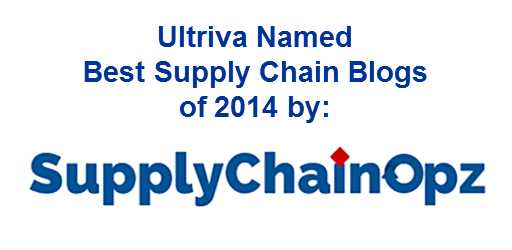Third party logistics providers (3PL) offer a variety of services, but the primary function of these organizations can be summarized as providing transportation, warehousing, and management of inventory for another company. Some companies handle inventory on consignment. Consignment stock is often defined as inventory owned by one party (in this case the “Supplier”), but held by another (the “3PL”). This risk rests with the first party, and do not get paid until the goods are sold (in this case the third player, the manufacturing “Company”).
 Nandu Gopalun, a Project Manager at Ultriva since 2000 has visited more than a hundred plants around the world and implemented Ultriva software in more than sixty plants. Gopalun is actively involved in Lean Factory Management and Collaborative Supplier Portal system design, development and deployment and recently shared the three most common problems in managing 3PL warehouses:
Nandu Gopalun, a Project Manager at Ultriva since 2000 has visited more than a hundred plants around the world and implemented Ultriva software in more than sixty plants. Gopalun is actively involved in Lean Factory Management and Collaborative Supplier Portal system design, development and deployment and recently shared the three most common problems in managing 3PL warehouses:
- inventory accuracy
- supplier visibility on the consigned material
- managing excess inventory returned from the plants
Major complexity arises for the company when the 3PL transfers a full lot to the assembly line and the company only needs one piece. Who pays the Supplier? Who is keeping track? Most of the time consumption of a whole inventory lot by the Company might take several days depending on how it is packaged. Who owns the inventory at this point? It is a daunting task for the 3PLs to keep track of company-owned inventories and supplier-owned inventories.
Ultriva software solves this problem of visibility. Ultriva architecture establishes a series of interconnected loops, standardizes receiving processes, standardizes material pick process, and standardizes shipping process for the 3PL material handler and receivers. Typically Ultriva recommends a closed-loop between the external Supplier and 3PL warehouse and multiple loops between the assembly lines and 3PL warehouse. A closed-loop system guarantees no part gets lost; a direct, traceable line is created that can be seen by anyone at any point of the parts’ lifetime. Multiple loops have the same closed-loop visibility, yet allows anyone to adjust the amount of parts being used depending on need.
For handling the traceability of consigned parts, Ultriva software pulls a list called “The Gross Requirement” from the company’s MRP, and then publishes this list to the supplier. Suppliers can log in to the cloud-based Ultriva Portal and get the Gross Requirement list and ship the goods based on the list to the 3PL warehouse.
At the warehouse, 3PLs receive the inventory and navigate to the RTS (Receive To Stock) screen; this is a simple data entry screen to input the data. The data the 3PL receiver inputs includes the packing slip (Mandatory) and the tracking number. Next the 3PL receivers create and print individual labels per pallet/box/skid or container and place the label appropriately.
As the containers are put away in the warehouse, the label is scanned to log where the inventory is stored. The supplier now has visibility when that shipment was received, who received it, and who put it away. The supplier knows whether the part has been received or is still waiting in the receiving dock, what quantity the 3PL received, how much inventory the 3PL has on-hand, and where the parts are located. There is no need for the supplier to visit the warehouse to check for the parts.
Accuracy for inventory in assured; when the 3PL delivers the inventory to the company’s assembly line, the label is again scanned. The receipt and correct packing slip is automatically transmitted to the Ultriva software and to the company’s ERP. The packing slip number will match the supplier’s packing slip number and the loop is closed. This standard process brings accuracy to the inventory.
The last problem 3PLs experience is handling returned inventory. Ultriva solves this problem by allowing the company or the 3PL receiver to create and print a unique label for every return tagged as “POL” (Plant owned Inventory). The inventory is returned and the label scanned. This allows the supplier to see how much inventory is owned by the company in the 3PL warehouse.
There is secondary loop between multiple assembly lines/sub assembly lines/kitting or repacking area. This can either be a Kanban (pull signal) or schedule based replenishment (which is based on assembly line lay in process.)
One of Ultriva’s customers gets orders based on assembly line lay in, they schedule it for every two to four hours. This makes assembly lines run smoothly with no extra inventory on the line. As soon as the line changes to the next finished goods SKU, any unused inventory is returned to the 3PL warehouse.
The three major problems in managing inventory between 3PL, suppliers and manufacturing companies are solved with a collaborative software portal that all parties use. This real time inventory visibility allows complete accuracy, whether the inventory is at the warehouse, on a dock being used in the assembly line, or sent back to the supplier.



